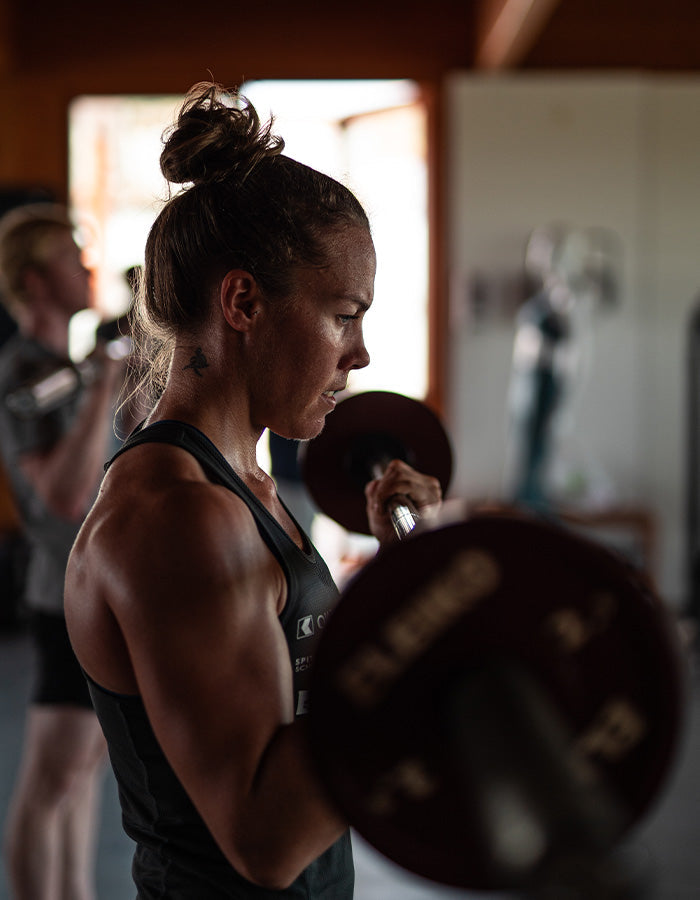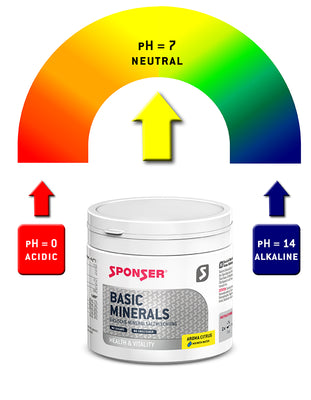
Lactoferrin and Iron in Sport - Iron Needs and Consequences of Deficiency
Iron deficiency is considered the most common nutrient deficiency globally. Particularly among female athletes it is widespread with 30-50% affected and dependent on several factors. Symptoms of iron deficiency include anaemia, which in contrast also can occur without iron deficiency, tiredness, floppiness, reduced physical performance and immune function. Increased heart rate and lactate levels may result as well. In Europe, approx. 23% of non-pregnant women, and 13-20% of children, 15% of men and roughly 10% of seniors suffer from anaemia (WHO, 2008), with the assumption of a 50% association with iron deficiency. A recent survey in Spain demonstrated an inadequate daily iron intake in 73% and 23% of the general population in women and men, respectively.
Besides magnesium it is iron, which is considered the most important mineral by athletes. Furthermore, because of its well-known function in oxygen transport an as a blood component it seems plausible to think of iron deficiency in case of premature tiredness and performance decline. Iron is also an important component of many enzymes and thereby involved in the regulation of the energy metabolism. Iron losses due to menstruation is a common reason for female athletes to take iron supplements or even infusions. However, infusions of more than 50 ml are considered as a doping method. Furthermore, the weakness of iron supplementation lies in a very low bioavailability, which therefore demands high dosages but, in turn, this causes side effects such as a constipation. Also adverse interactions with other nutrients may occur. Iron transport within our body takes place by the binding of iron to proteins, e.g. transferrin or lacto(trans)ferrin. The latter occurs mainly in milk as its name implies. Roughly two thirds of total body iron is bound in the red blood cells as haemoglobin. Another quarter of iron is stored as ferritin in liver, spleen and bone marrow. These stores are very fluctuating. In dependence of ferritin stores in blood and liver our body hormonally regulates absorption of dietary iron.
The daily iron needs are calculated from the losses and the bioavailability of dietary iron, which on average is 10%, but highly varies between sources and in dependence on the food matrix. Present nutrition recommendations read 10 to 20 mg iron daily in order to compensate for the 1-2 mg estimated losses. Women of childbearing age, pregnant and lactating women should target the upper range. In athletes, microlesions caused by repeated perturbations of long-distance physical exercise, as well as the use of anti-inflammatory drugs such as Ibuprofen or Voltaren, can provoke additional iron losses. However, there is great interindividual variation on iron losses, which discourages to draw general recommendations thereof.
Dietary iron content
The highest iron contents are found in red meat and liver, further in kernels and seeds. However, the absorption rate of iron from foods depends on several factors, incl. the individual iron status. Body iron is found mainly in three chemical forms. Haem-iron is bound in red blood cells to the protein haemoglobin, and in muscles to myoglobin. Haemoglobin transports iron in the blood, myoglobin in muscles. Haem-iron exists only in animal food and is also the iron form with the highest bioavailability of 15 to 35%, whereas free-form iron is much less absorbed (5 to 12%). Free-form iron (Fe) can occur as di- or tri-valent iron (Fe2+, bzw. Fe3+) and is also called non-haem iron. Both haem- and non-haem iron occur in animal food.
The absorption of non-haem iron, in contrast to haem-iron, is influenced by various substances and nutrients in a food matrix. Interestingly, particular proteins found in animal food promote also the absorption from non-haem iron. Furthermore, also citric and ascorbic acid (vitamin C) enhance non-haem iron bioavailability. In this respect, about 100 ml orange juice demonstrate a similar effect like 30 g of muscle meat, enhancing the iron absorption rate for about a factor 2 or 3! On the opposite, polyphenols from e.g. coffee or wine are disadvantageous in terms of iron absorption. It is deemed important to note that the ingestion of a sour beverage during a meal, or to drip lemon juice on one's vegetables, is more beneficial than skipping one's cup of coffee after lunch. Even alcohol, due to its stimulating effect and stomach acid production, influences iron absorption positively. This makes it unclear, if wine consumption is positive or negative regarding iron absorption. A very clear negative effect on iron bioavailability have complex-forming phytates from cereals. A fact which puts a big question mark to iron enrichment in breakfast cereals. At least also here the simultaneous intake of vitamin C or sour beverages improves absorption.
Iron malabsorption can also be caused by various conditions, such as celiac disease, stomach surgery, gastrointestinal, heart or kidney diseases, as well as the infection with the bacteria Heliobacter pylori. Vegetarians and vegans have an increased risk of deficiency since the best bioavailable haem-iron is lacking in their diet. Even more, the predominantly used soy as a protein source contains the above-mentioned phytates hindering iron absorption. Consequently, it is of great importance for these population group to pay attention on dietary means to improve non-haem iron absorption.
Iron supplementation
Obviously, a combination of the above factors increase the risk of iron deficiency. For example, a vegetarian female athlete being on a diet, or already with a low body mass, and habitual coffee drinker will have a very high risk of iron deficiency. Iron status is usually determined by analysis of ferritin, which mainly indicates iron store levels. Due to a wide range of normal iron store levels, conclusions on iron deficiency are disputable. First of all, it is important to respect a nutritional behaviour in the frame of a suitable diet regarding optimal iron supply and absorption, prior to any supplementation measures.
It is often very unclear who should be supplemented with how much iron, and gastrointestinal problems are common. Regarding athletes, it is deemed important to note, that iron supplementation only enhances physical performance with existing deficiency. Clinical dosages range between 80-120 mg per day, whereas enriching of foods and food supplements is limited to maximally 14 mg per day. The upper tolerable long-term level without risk is set at 45 mg per day! Besides side effects, high dosages cause also an adverse increase of the oxidative potential and hinder the absorption of other minerals. Because on one hand iron deficiency is prevalent – particularly with women and athletes – but on the other hand high dosages may have adverse effects, it is certainly more advantageous first to improve absorption prior to taking iron supplements.
Lactoferrin – an alternative to iron supplements
Lactoferrin offers a solution to the dilemma of a - necessarily high - intake of supplemental iron in order to cure deficiency and the known potential risks. As already mentioned, lactoferrin is a transport protein binding to iron. Lactoferrin is found in high concentration in the milk of mammals. Beside its complexing and transport function it has also an immuno-modulating, anti-inflammatory and antioxidative effect. One molecule of lactoferrin can bind and transport two iron molecules. In the "natural" state lactoferrin from cow's milk is only partly saturated with iron (15-20%) and called holo-lactoferrin. "Emptied" lactoferrin contains less than 5% iron and is called apo-lactoferrin. The latter is the main form in mother's milk.
Lactoferrin from cow's milk was first applied in mother's milk substitutes. Since 2012, lactoferrin is registered as a Novel Food ingredient and authorised for use in various food categories, mainly with respect to its immuno-modulating properties. Not before recently lactoferrin's function in iron metabolism came into focus. The bioavailability of iron from lactoferrin excels even the highest known bioavailability of iron sulphate (Rezk, 2015): 300 pregnant women received either 250 mg lactoferrin, 150 mg iron sulphate or 250 mg iron fumarate during 8 weeks. The lactoferrin group reached a doubled increase of haemoglobin levels (+30%) compared to the other two groups (+15% and +14%). At the same time lactoferrin resulted in less side effects and better tolerance. Another study on pregnant women with iron deficiency, with and without anaemia, demonstrated that lactoferrin (compared to iron sulphate) improved number of red blood cells, haemoglobin, serum iron and serum ferritin after 30 days (Paesano, 2010). Previously, similar absorption rates of iron and increased haemoglobin, serum ferritin, and serum iron were found with lactoferrin compared to iron sulphate supplementation (Nappi, 2009).
Performance enhancement with lactoferrin
Also in non-pregnant women – precisely in female long-distance runners – lactoferrin could reduce incidences of the usually very common anaemia among this population group. They received either 5 mg iron pyrophosphate with or without 450 mg of lactoferrin during 8 weeks. Also in this study the lactoferrin group showed a higher number of red blood cells, higher serum ferritin and serum iron levels (Koikawa, 2008).
In this very study, also a performance test was included. The athletes had to perform a 3000m run before and after the supplementation period. The starting speed was set at 90% of the average time of all personal best times, increased after 1000m and again after 2000m. Finally, lactic acid accumulation was measured. These values show clearly that the lactoferrin group had a much lesser increase compared to their first run than the iron-only group. In interpretation one can say that the continues evacuation of lactic acid is more efficient after 8 weeks of lactoferrin plus iron supplementation compared to iron solely. One can also conclude that the improved blood and iron values led to less exertion on the 3000m at a given speed, grace to improved oxygen transport and ultimately energy metabolism.
In summary, iron deficiency and concomitant performance decrease, which is common in sports and particularly in women, can be treated more efficient and with fewer side effects by supplemental lactoferrin, also in combination with low-dosed iron and vitamin C. Finally, such a supplementation can also be recommended as a preventive, long-term measure.
SPONSER® offers LACTOFERRIN in easy-to-take capsules. One daily ration of 2 capsules delivers 200 mg of lactoferrin, 14 mg iron (100% NRV) along with 48 mg of vitamin C (60% NRV). Click here to download the full article as a PDF with further studies and graphics.
Literature
• Colombani et al, 2015: Eisen (Fe) & Eisenmangel im Sport, Swiss Forum Sport Nutrition
• Koikawa et al, 2008: Preventive effect of lactoferrin intake on anemia in female long distance runners. Biosci Biotechnol Biochem, 72(4),931-5
• Nappi et al, 2009: Efficacy and tolerability of oral bovine lactoferrin compared to ferrous sulfate in pregnant women with iron deficiency anemia: a prospective controlled randomized study. Acta Obstet Gynecol Scand, 88(9):1031-5
• Paesano et al, 2010: Lactoferrin efficacy versus ferrous sulfate in curing iron deficiency and iron deficiency anemia in pregnant women. Biometals, 23:411-7
• Rezk et al, 2015: Oral lactoferrin versus ferrous sulphate and ferrous fumerate for the treatment of iron deficiency anemia during pregnancy. J Adv Nutr Human Metabol, 2:e740.doi:10.14800/janhm.740
• Samaniego-Vaesken et al, 2017: Iron intake and dietary sources in the Spanish population: Findings from the ANIBES study. Published ahead of print: 10.3390/nu9030203
• Iron depletion in athletes: http://paragraph.com.au/pdf/books/clin-sp-nutr.pdf
Author: Remo Jutzeler
Head R&D SPONSER SPORT FOOD
Ing. Applied Food Sciences UAS
MAS Nutrition & Health ETHZ



















